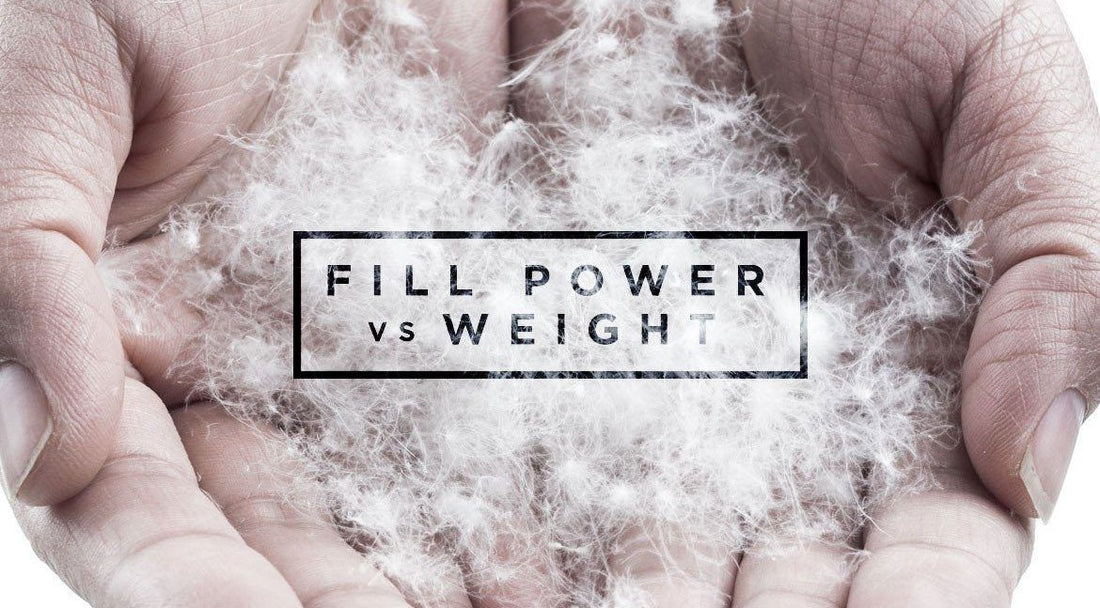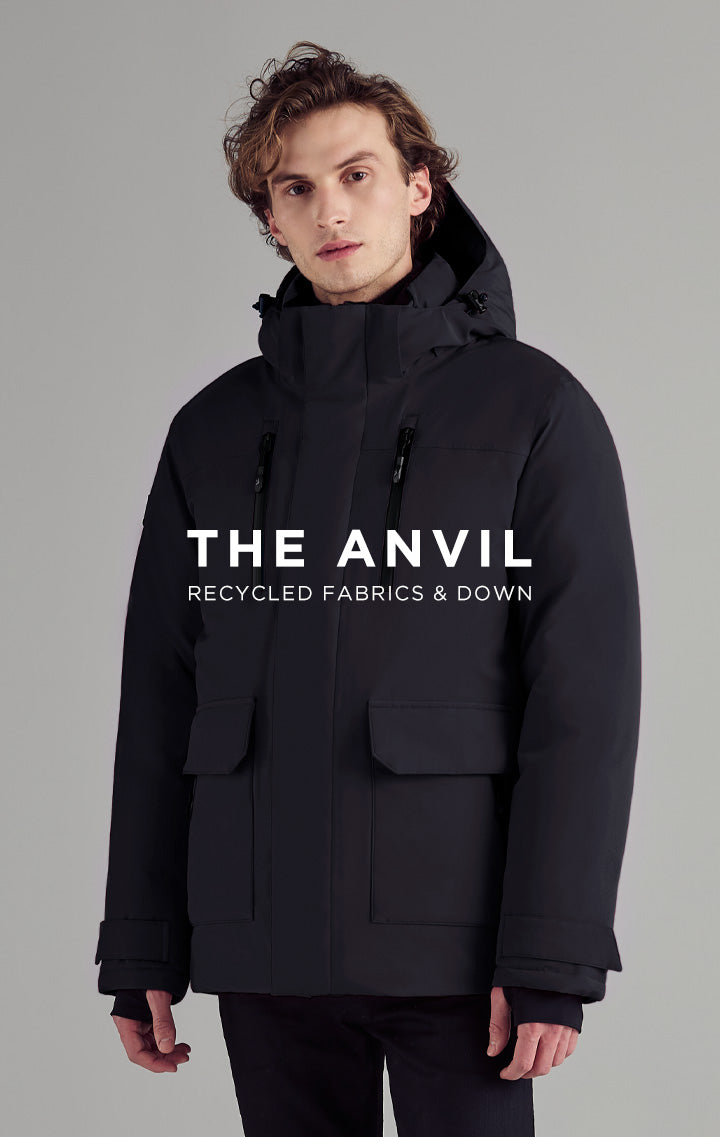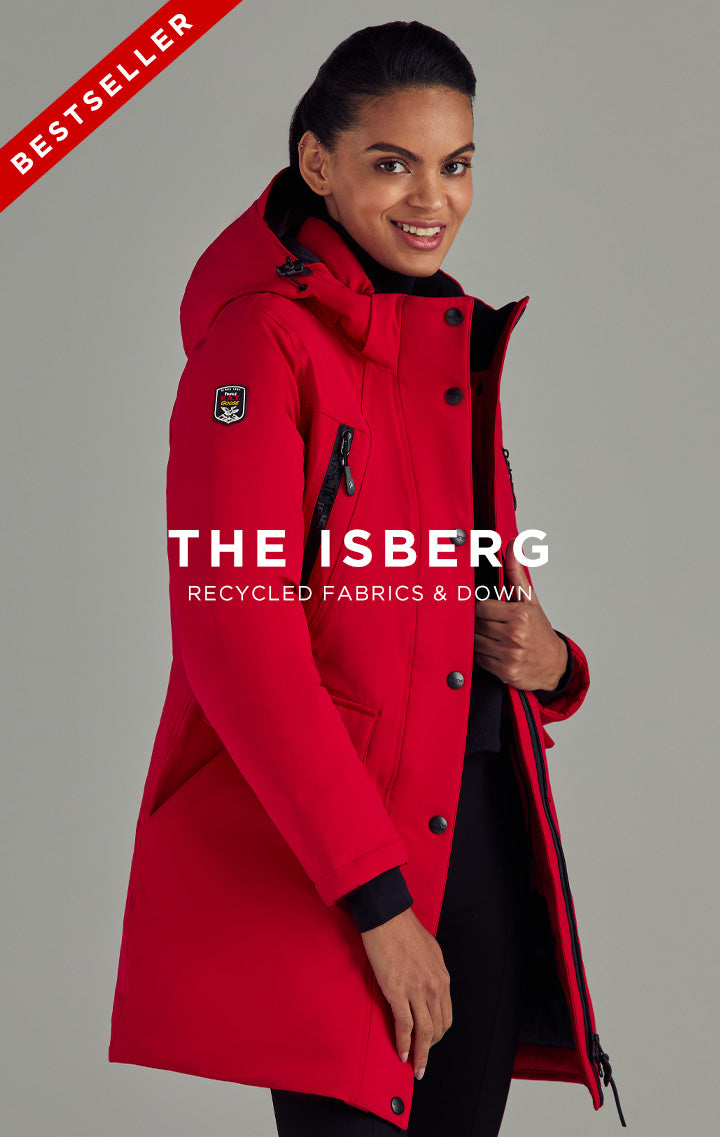Whether you’re skiing down a mountain, commuting to work, or simply enjoying a winter’s day in the outdoors, it’s important to protect yourself from the cold. Staying warm isn’t just a matter of comfort. It’s a matter of safety. But with so many brands and styles, it can be difficult to figure out what the best choice of down jacket might be.
In this guide, we’ll show you what down is and why we use it, what the crucial and often overlooked difference between fill power and fill weight is, how to make sense of warmth-to-weight ratio and down-to-feather ratios, and how to figure out how warm your jacket will be.
At the end of the day, you shouldn’t let the bitter cold weather stop you from being warm and comfortable. Use the information below to make the best decision about what kind of down jacket to purchase the next time you need one.
What is down, and why do we use it?
Down comes from the plumage of a bird. The plumage is the soft, fluffy undercoat that lies beneath the tougher feathers at the underbelly. The most common types of down come from ducks and geese. In either case, the more mature the bird is, the larger its plumage tends to be. This results in a greater loft and a higher down fill power rating. We’ll define loft and fill power in a minute. But first, why do we use down at all?
First, let’s look at what insulation does. The purpose of insulation is to trap the heat from your body and to prevent it from escaping into the cold. It’s a principle of thermodynamics that heat will always move from a hotter region to a colder region to achieve equilibrium. In other words, the heat your body produces is always moving out into the air around you. Insulation acts as the barrier between your body and the outside air. It retains the heat and reflects it back to you.
During production, down gets formed into clusters which are then used for items such as jackets, pillows, comforters, sleeping bags, and other such things. Each cluster is made of thousands of tiny fibers crisscrossing in every direction and the air pockets between them. Just like a sponge traps water, these down clusters trap air in a way that heats it up while allowing the material itself to breathe. As Outdoor Gear Lab notes, down fill has a phenomenal “warmth to weight” ratio, and it resists damage incurred from compression (think: stuffing it into your backpack). This is why down is widely considered to be the best insulator known to man. Down jackets can keep you comfortably warm without weighing you down. Scientists can’t even create anything as effective in the laboratory!
There are three things to consider when purchasing a down insulated product: fill power, down weight, and down ratio. We’ll explore each of them below.
What is fill power?
Fill power measures the loft of a down product, which is essentially the quality of the down. Maximum loft occurs when the down clusters are fully expanded. The fill power rating value is calculated by measuring how many cubic inches an ounce of down creates at its maximum loft. A down fill rating of 600, for example, means that one ounce of down can cover 600 cubic inches. The process involves putting the down into a Plexiglas cylinder and slightly compressing it with a weight.
It’s important to note that fill power is measured differently in the United States than it is in Europe due to the different types of cylinders that are used. In the U.S., the cylinder has a diameter of 241 millimeters and weights around 68.3 grams. In Europe, the cylinder is larger at 289 millimeters and weighs more at 94.25 grams.
The fill power rating can range from 300 to 900 and above. The most common down products have a rating of 400 to 500. These are considered to be low quality, however, as they come from immature geese and ducks and therefore are made from smaller down clusters. When purchasing a high quality down fill jacket, you should look for a fill power rating of at least 550. A quality jacket of this caliber will be both warmer and more comfortable.
Learn more about Triple F.A.T. Goose, a brand with a 35 year history that has been featured in GQ, Esquire, Vogue, Outside, and more. Shop the collection.
SHOP TRIPLE F.A.T. GOOSE
What is fill weight?
While fill power is a measure of volume, fill weight is a measure of—you guessed it—weight. Fill power rates quality, and fill weight signals quantity. If a jacket has a down weight of 12 ounces, that means that 12 ounces of down material was used to make it. While many outerwear brands proudly draw attention to their high fill power, they often fail to mention the fill weight. This is extremely important, however, as down weight also plays an equal part in determining the product’s warmth and shouldn’t be overlooked by consumers.
As Down and Feather Company explains, the fill weight is what determines how soft or firm a product is. It is also what determines how well the product compresses. Like we mentioned above, a great feature of down is its ability to be stuffed into a backpack without taking on damage. The heavier a down jacket is, the less it will be able to compress.
What is the down to feather ratio?
The down to feather ratio calculates the percentage of down to the percentage of feathers in the product. The numbers are generally 70/30, 80/20, or 90/10. The first number represents the percentage of down, and the second number represents the percentage of feathers. Generally speaking, a higher first number means a higher quality (and more expensive) product. While down costs more, it is a much better insulator than feathers and thus is preferred in good insulated jackets. A 600 fill power down jacket with an 80/20 down to feather ratio will be a warmer jacket than a 600 fill power jacket with a 70/30 ratio.
Why is it that down makes a better insulator than feathers? Recall that the down is plucked from underneath the feathers. Because the feathers are on the outside, they are what allows the goose or duck to float, fly, and stay dry. They are much more firm and have quilts that act almost as a stem. Getting poked by one of these hurts! Feathers are ideal for harder and more durable products like seat cushions, but down is better for providing enhanced warmth and comfort in jackets, sleepings bags, and duvets.
How warm will my jacket be?
When purchasing a down jacket, should you pay more attention to the fill power or to the down weight? If you’re looking for a jacket to keep you warm, you need to consider both! Here are some examples to help illustrate how fill power and down weight work together:
- A jacket with 500 fill power and 10 oz. of down will be warmer than a 800 fill power jacket with 5 oz. of down.
- With the down weight and down to feather ratio being equal, an 800 fill power jacket will be warmer than a 500 fill power jacket.
- An 800 fill power jacket will require less down than a 500 fill power jacket to provide the same warmth.
At Triple F.A.T. Goose, we make it a priority to use both a high fill power without compromising the amount of down used in our parkas. Unlike most outerwear companies, we publish not only the fill power but also the down weights of our men's, women's, boy's, and girl's coats. For example, the Rockhopper men’s down puffer has a 750 fill power with 12 oz of premium recycled down.
It’s easy to see why many brands put so much emphasis on their fill power. An 800 fill power jacket will weigh less than the 500 fill power jacket while providing the same level of warmth. This is why higher fill power jackets are used by performance athletes such as hikers, climbers, and skiers who seek lightweight jackets that provide mobility and warmth.
Trying to make sense of the relationship among fill power, down weight, and the down to feather ratio can be a little confusing. To make matters easier, many companies use the Clo value. Invented in 1941, Clo measures the insulation value of clothing needed to maintain comfort for a person sitting at rest in room temperature with humidity at less than 50%. That’s just a fancy way of saying that Clo measures how warm an article of clothing is.
The higher the Clo value, the warmer the product is. For example, a jacket with…
- …550 fill power with 1 oz. of down has a Clo of approximately 0.7,
- …625 fill power with 1 oz. of down has a Clo of approximately 0.92,
- …800 fill power with 1 oz. of down has a Clo of approximately 1.68.
For reference, the naked body has a Clo value of zero, and a Clo value of 1 is what a person needs at room temperature. According to Adventure Poet, winter temperatures from -4º to -40º F require a person to wear clothing totaling a Clo value of 4 or greater.
Conclusion
Wes Siler of Outside Magazine says, "Fill power and down weight are like the horsepower and torque for insulation. Numbers don't lie, the higher the fill power, the higher quality the down, and the more compressible it will be. A high fill power combined with a high fill weight is a recipe for maximum warmth. "
Hopefully this guide made it easier for you to make sense of all the numbers you see when purchasing a down jacket. Remember, it’s important to pay attention to all of the aspects that go into making a down product, especially the fill power, down weight, and down to feather ratio. If things get a little complicated, you can feel confident in simply looking for a higher Clo value. And lastly, the way the down is distributed through the jacket, either sewn through or in box baffles, plays a part in whether the warmth of the jacket will be consistent.
It’s important to be safe while encountering cold temps. Now you’ll be able to informatively choose a high-quality down jacket to protect you from the elements and keep you comfortable longer. Stay warm, and keep adventuring.





